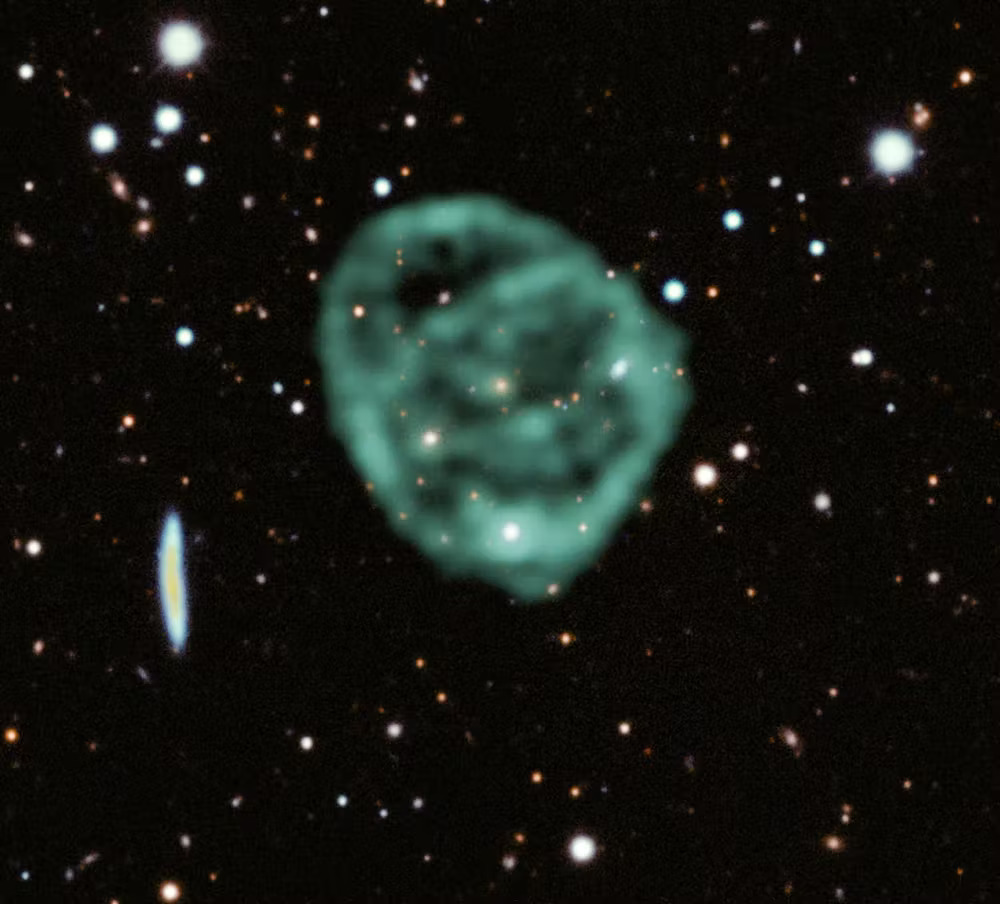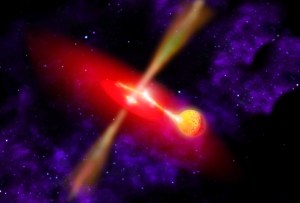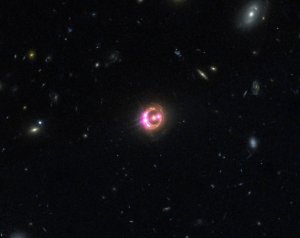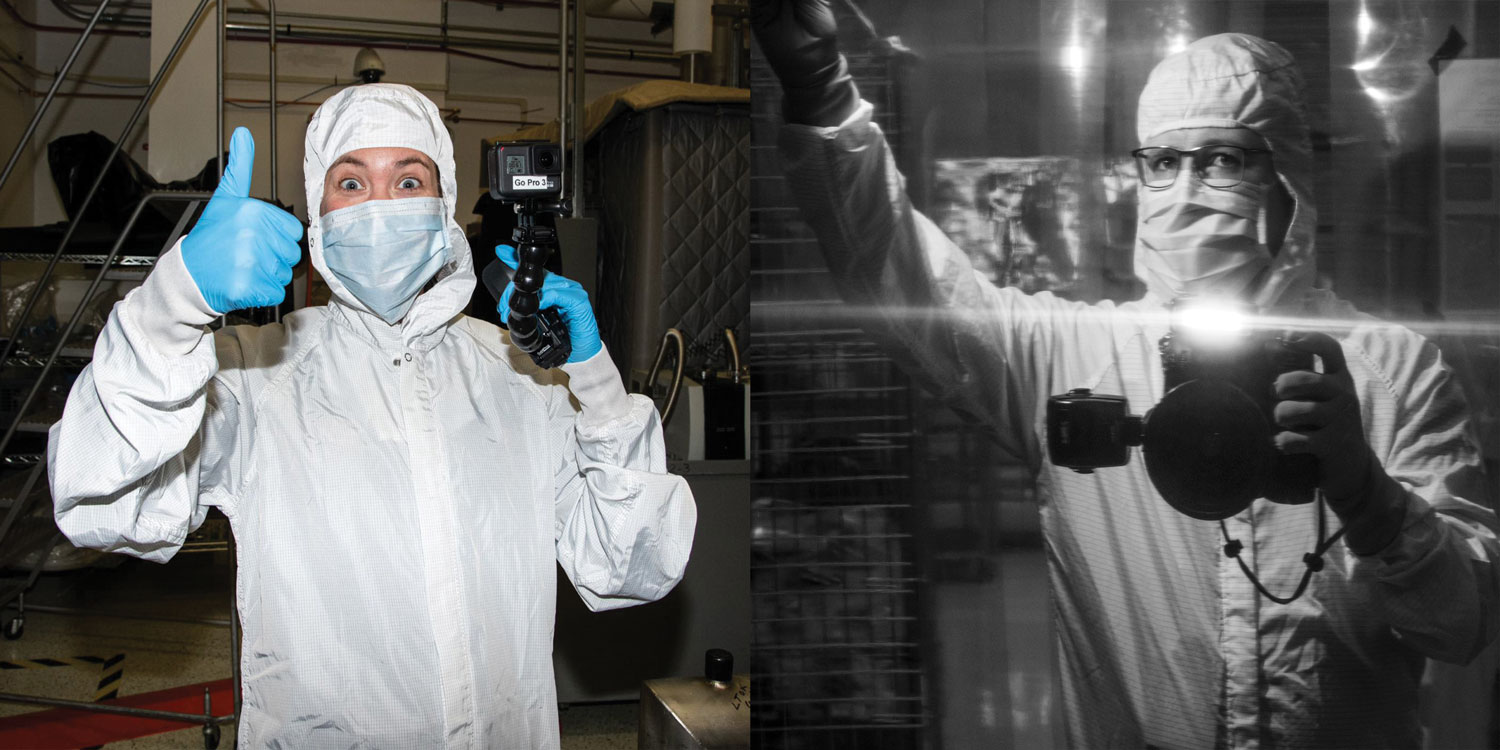X-ray Satellite XMM-Newton Sees ‘Space Clover’ in a New Light
Astronomers have discovered enormous circular radio features of unknown origin around some galaxies. Now, new observations of one dubbed the Cloverleaf suggest it was created by clashing groups of galaxies. Studying these structures, collectively called ORCs (odd radio circles), in a different kind of light offered scientists a chance to probe everything from supersonic shock […]
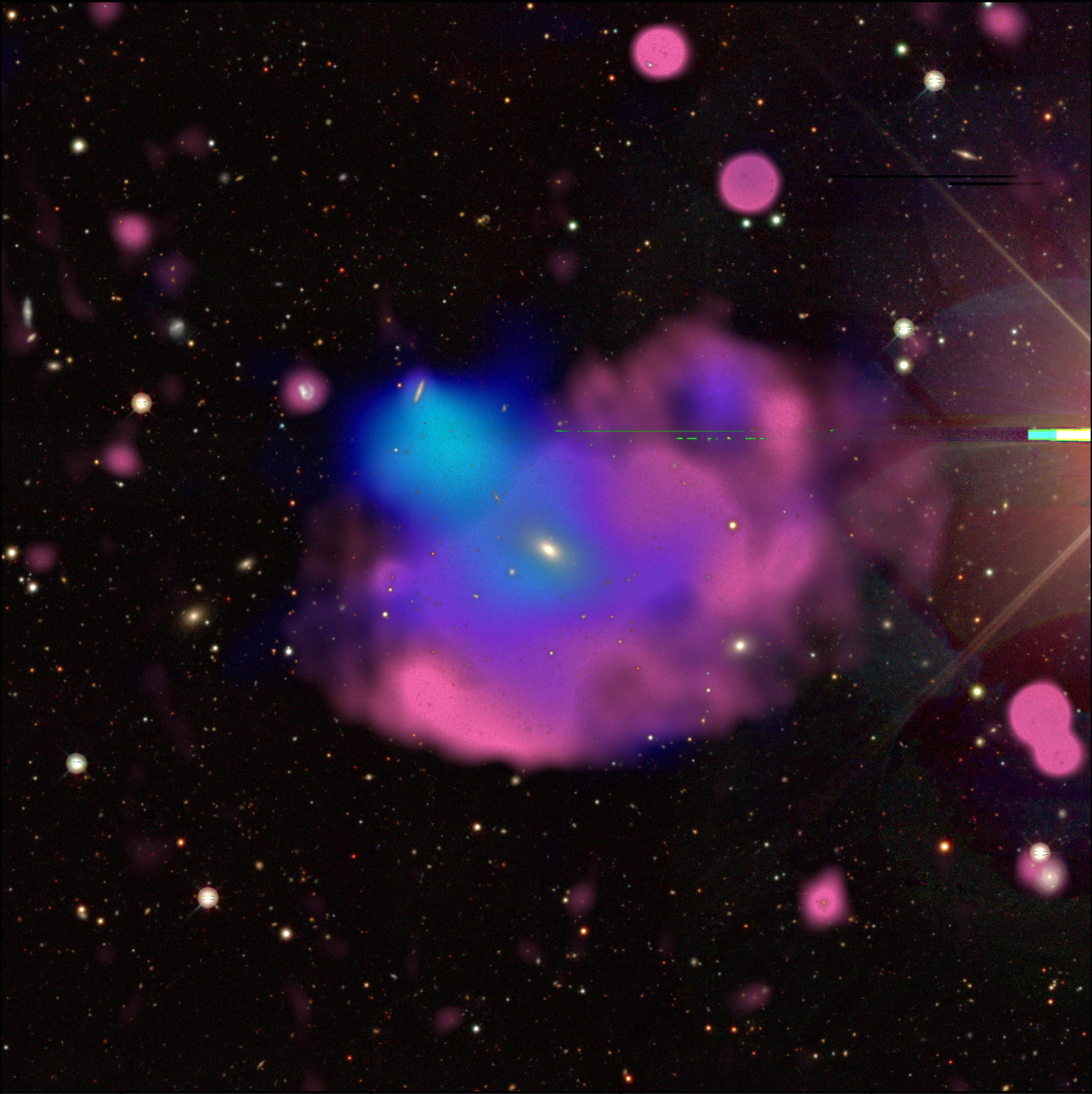
Astronomers have discovered enormous circular radio features of unknown origin around some galaxies. Now, new observations of one dubbed the Cloverleaf suggest it was created by clashing groups of galaxies.
Studying these structures, collectively called ORCs (odd radio circles), in a different kind of light offered scientists a chance to probe everything from supersonic shock waves to black hole behavior.
“This is the first time anyone has seen X-ray emission associated with an ORC,” said Esra Bulbul, an astrophysicist at the Max Planck Institute for Extraterrestrial Physics in Garching, Germany, who led the study. “It was the missing key to unlock the secret of the Cloverleaf’s formation.”
A paper describing the results was published in Astronomy and Astrophysics Letters on April 30.
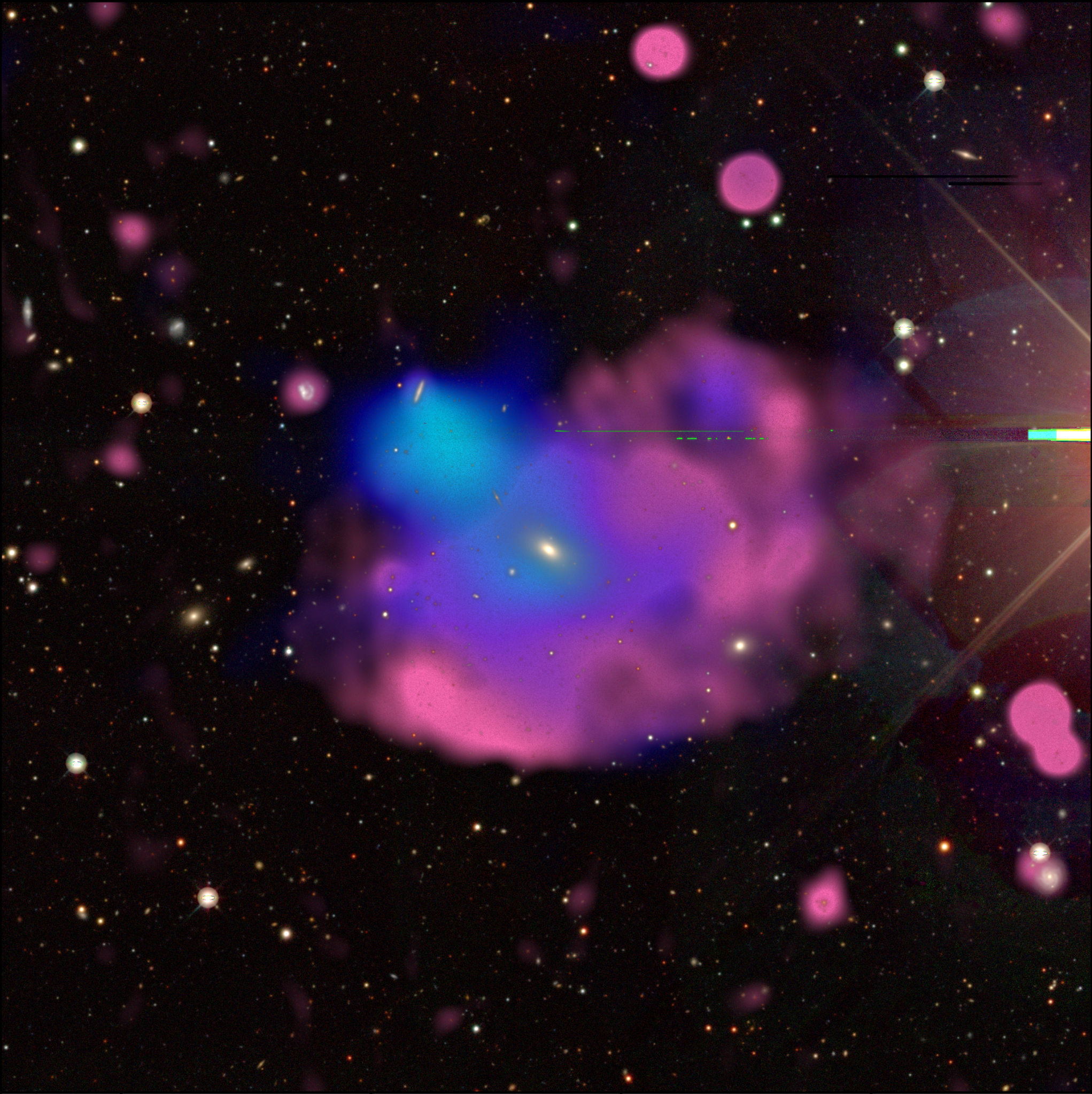
A Serendipitous Discovery
Until 2021, no one knew ORCs existed. Thanks to improved technology, radio surveys became sensitive enough to pick up such faint signals. Over the course of a few years, astronomers discovered eight of these strange structures scattered randomly beyond our galaxy. Each is large enough to envelop an entire galaxy –– sometimes several.
“The power needed to produce such an expansive radio emission is very strong,” Bulbul said. “Some simulations can reproduce their shapes but not their intensity. No simulations explain how to create ORCs.”
When Bulbul learned ORCs hadn’t been studied in X-ray light, she and postdoctoral researcher Xiaoyuan Zhang began poring over data from eROSITA (Extended Roentgen Survey with an Imaging Telescope Array), an orbiting German/Russian X-ray telescope. They noticed some X-ray emission that seemed like it could be from the Cloverleaf, based on less than 7 minutes of observation time.
That gave them a strong enough case to assemble a larger team and secure additional telescope time with XMM-Newton, an ESA (European Space Agency) mission with NASA contributions.
“We were allotted about five-and-a-half hours, and the data came in late one evening in November,” Bulbul said. “I forwarded it to Xiaoyuan, and he came into my office the next morning and said, ‘Detection,’ and I just started cheering!”
“We really got lucky,” Zhang said. “We saw several plausible X-ray point sources close to the ORC in eROSITA observations, but not the expanded emission we saw with XMM-Newton. It turns out the eROSITA sources couldn’t have been from the Cloverleaf, but it was compelling enough to get us to take a closer look.”
Gallivanting Galaxies
The X-ray emission traces the distribution of gas within the group of galaxies like police tape around a crime scene. By seeing how that gas has been disturbed, scientists determined that galaxies embedded in the Cloverleaf are actually members of two separate groups that drew close enough together to merge. The emission’s temperature also hints at the number of galaxies involved.
When galaxies join, their higher combined mass increases their gravity. Surrounding gas begins to fall inward, which heats up the infalling gas. The greater the system’s mass, the hotter the gas becomes.
Based on the emission’s X-ray spectrum, it’s around 15 million degrees Fahrenheit, or between 8 and 9 million degrees Celsius. “That measurement let us deduce that the Cloverleaf ORC is hosted by around a dozen galaxies that have gravitated together, which agrees with what we see in deep visible light images,” Zhang said.
The team proposes the merger produced shock waves that accelerated particles to create radio emission.
“Galaxies interact and coalesce all the time,” said Kim Weaver, the NASA project scientist for XMM-Newton at NASA’s Goddard Space Flight Center in Greenbelt, Maryland, who was not involved in the study. “But the source of the accelerated particles is unclear. One fascinating idea for the powerful radio signal is that the resident supermassive black holes went through episodes of extreme activity in the past, and relic electrons from that ancient activity were reaccelerated by this merging event.”
While galaxy group mergers are common, ORCs are very rare. And it’s still unclear how these interactions can produce such strong radio emissions.
“Mergers make up the backbone of structure formation, but there’s something special in this system that rockets the radio emission,” Bulbul said. “We can’t tell right now what it is, so we need more and deeper data from both radio and X-ray telescopes.”
The team solved the mystery of the nature of the Cloverleaf ORC, but also opened up additional questions. They plan to study the Cloverleaf in more detail to tease out answers.
“We stand to learn a lot from more thorough observations because these interactions take in all kinds of science,” Weaver says. “You’ve pretty much got everything that we deal with in the cosmos put together in this little package. It’s like a mini universe.”
For more information on ESA’s XMM-Newton mission, visit:
https://science.nasa.gov/mission/xmm-newton/
By Ashley Balzer
NASA’s Goddard Space Flight Center, Greenbelt, Md.
Media Contact:
Claire Andreoli
301-286-1940
claire.andreoli@nasa.gov
NASA’s Goddard Space Flight Center, Greenbelt, Md.
Share
Details
Related Terms
What's Your Reaction?



















.jpg?#)























